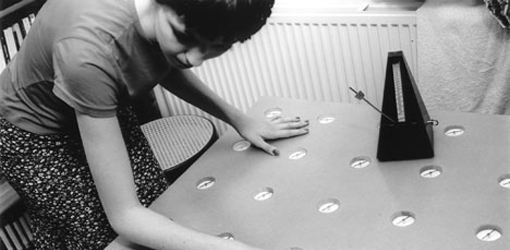Everyone’s a Critic …
Posted on December 2, 2010 | posted by:Critical Design has been gaining more and more momentum in the design circles in the past few years and lately it’s been a major part of the conversation in the Transdisciplinary Design studio. One of the dialogues involved the notion ‘Critical of the Critical’, based on the debate whether Critical Design is a form of design or art.
So what is Critical Design and what makes it such a popular topic of discussion amongst the creative circles? With growing consumerism and materialism, Critical Design critiques and throws reflection on the consumerist design culture. Artifacts are created which seek to challenge and provoke thoughts on such issues.
Maybe it’s true that what you give is what you get back and it’s ironic to see Critical Design being criticized. Mostly seen in exhibits, films and prints, there has been censure that it does not fall in the design domain. The objects created don’t really make their way into the market place and rarely serve a utility in the traditional context, the way commercial design does. It’s easy to see why one can see this approach and the creation of these one odd-pieces more as an art form.
In the flip side, Anthony Dunne & Fiona Raby, the designers who have coined the name, claim that perceiving it as art is a big misconception and that it should be dealt with as design. Their point of view is comprehensible when one sees the array of objects created. They manifest in them a sense of functionality with their play on everyday products. Take for instance, the Dunne and Raby Compass Table, in which the needles twitch in reaction to electromagnetic fields created by electronic devices. Such a table could very well be sold and function as an everyday product.
So, it seems everyone’s a critic. Benjamin Franklin has said, “ Any fool can critisize, condemn and complain and most fools do.” So, trying not to be too critical about this ongoing debate, what comes to my mind is what’s in the name anyway? In today’s times, it’s no surprise that designers are exploring more towards interdisciplinary realms. Also who’s to decide what’s art and what’s design, it’s difficult to draw a line between them. The important point to remember is the intent for which the objects are created.
Maybe some of the parallel questions, which arise from this debate, deserve attention. It’s interesting to think about whether the concept of Critical Design is mostly known and comprehensible to the art and design world? Is it really aimed at and accessible to the general public? Are they a part of the conversation?
Instead of being a one-off piece displayed in an exhibit, why not concentrate more on Critical Designs for the mass markets? Not only would this help in reasserting it as a form of design but also serve its primary function better. By making people consumers of Critical Design rather than only its audience, the conversation opens up to the world.
